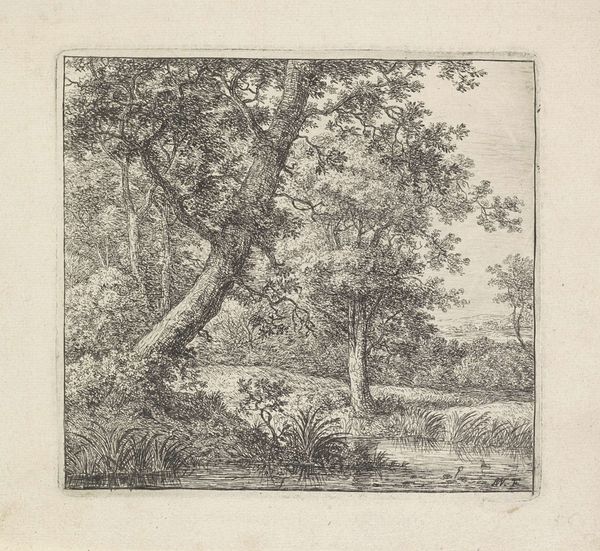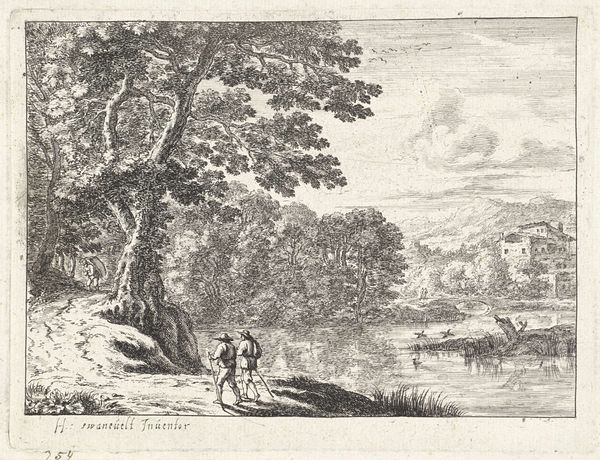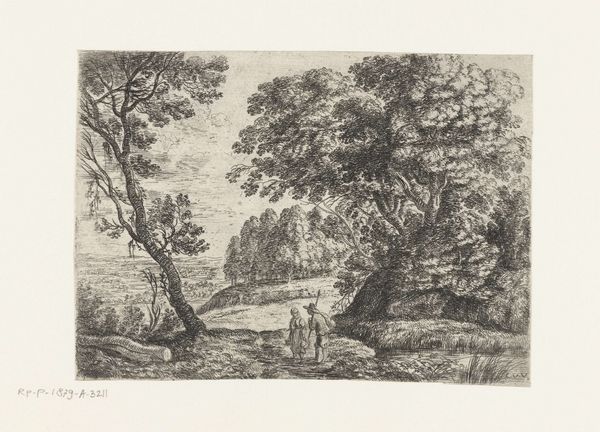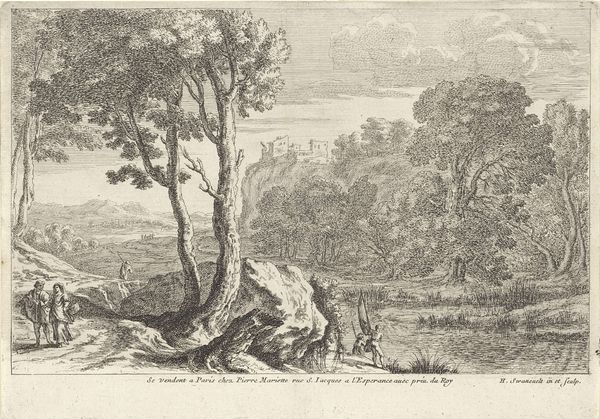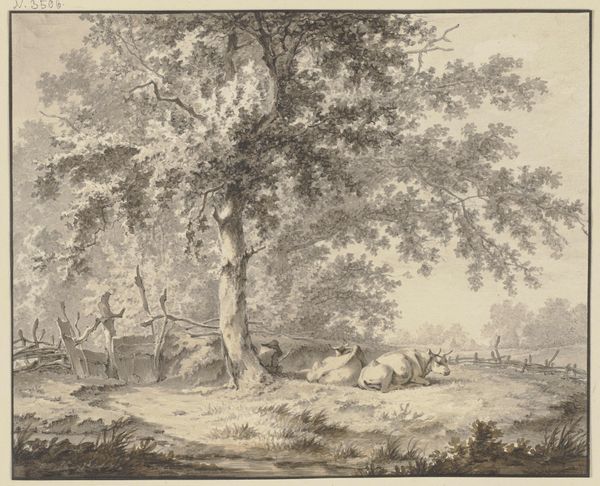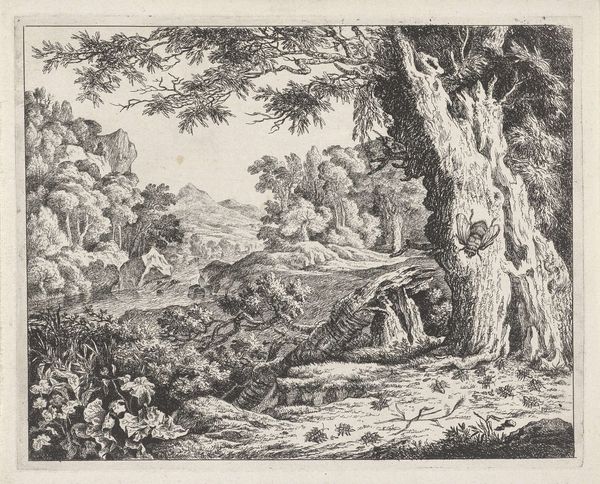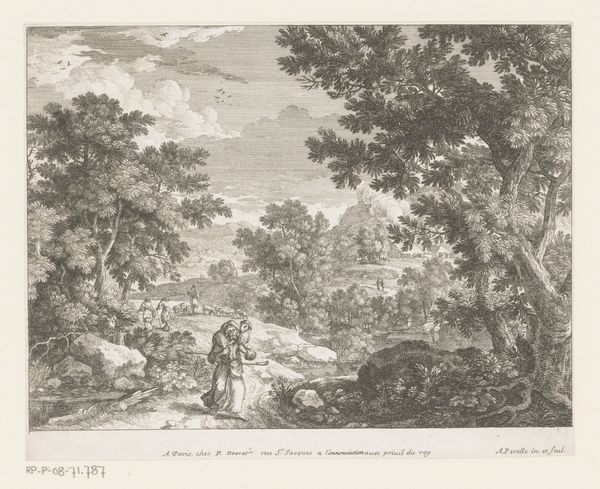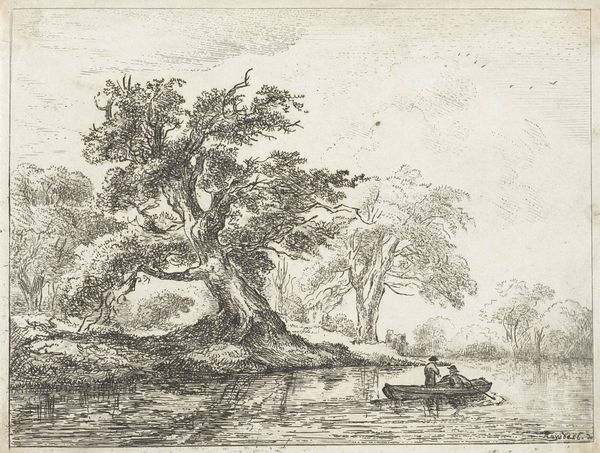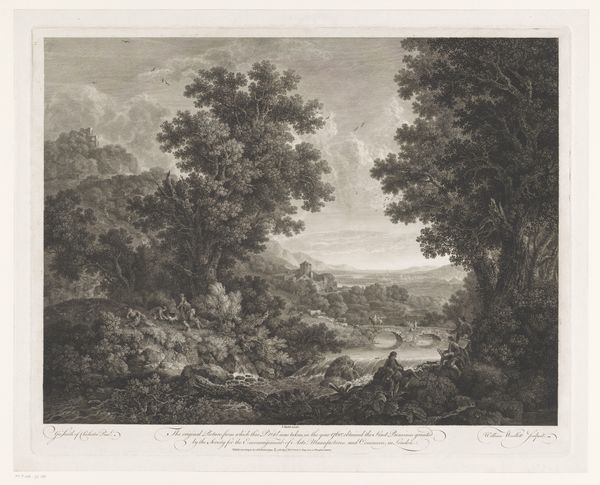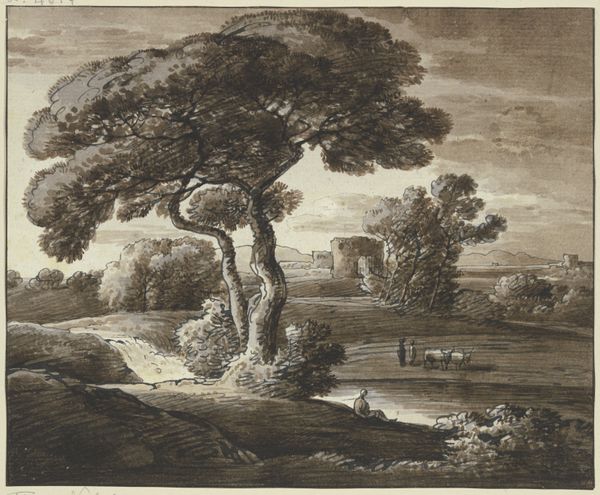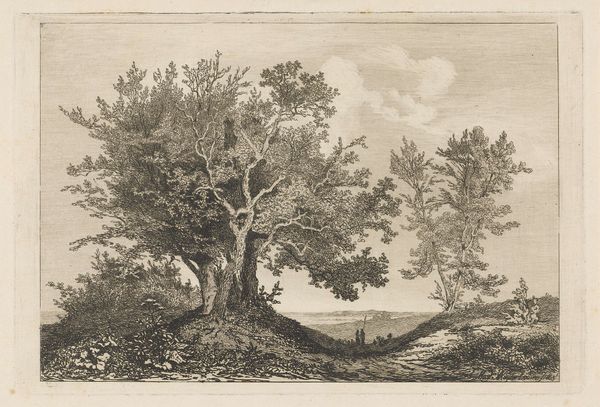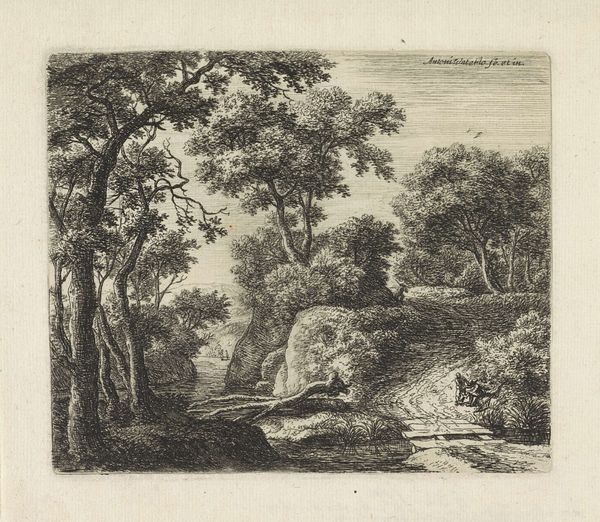
drawing, etching
#
tree
#
drawing
#
etching
#
pencil sketch
#
dog
#
landscape
#
charcoal drawing
#
figuration
#
pencil drawing
#
romanticism
Dimensions: height 149 mm, width 220 mm
Copyright: Rijks Museum: Open Domain
Curator: This is Martinus Antonius Kuytenbrouwer jr.'s etching "Twee jagers aan de waterkant", made around 1845. Editor: Oh, it has a sombre beauty to it! A sort of stillness. The stark contrasts create a very romanticized view of the landscape, particularly with that colossal tree dominating the scene. Curator: Kuytenbrouwer’s skill in etching allows us to analyze the production of printed imagery, it gives widespread access to landscape imagery to a broader nineteenth-century audience. The landscape provides more than just aesthetic pleasure. Editor: True. And beyond its reproductive function, the composition is strikingly structured. The eye is drawn across the water, upward into the tangle of branches, following that strong diagonal. What symbolism do you see? Curator: The focus is certainly on labor, portraying hunters at rest and on the periphery as part of the economic structures that depended on exploitation and cultivation of natural resources. The presence of a loyal dog highlights their social positioning and status through hunting practices within societal dynamics. Editor: I am not certain about this statement! Considering Romanticism was a broader context back then; those compositional elements enhance the narrative. Note that stark, graphic line, that is how it captures a feeling of grandeur within what's obviously a small-scale print. It’s not only descriptive; it's deeply evocative! Curator: Romanticism as you define it also carries within its aesthetics, specific social constructs, embedded in the production and ownership related to these landscapes... Editor: Yes, it does. It seems we both see layers there! Regardless of this point of friction, both analyses contribute in interpreting not only visual elements as components, but how societal structures contributed and created imagery as visual object. Curator: Right! It’s more than a picturesque view; it’s part of a system of artistic manufacture. Editor: Yes, seeing it as more than aesthetics! Overall it offers more than visual appeal, inviting viewers into contemplating socio economic structures.
Comments
No comments
Be the first to comment and join the conversation on the ultimate creative platform.
